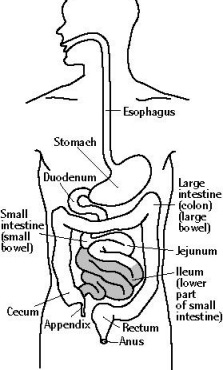
Crohn’s And Colitis Awareness Month
Crohn’s disease and ulcerative colitis are diseases that inflame the lining of the GI (gastrointestinal) tract and disrupt your body’s ability to digest food, absorb nutrition and eliminate waste in a healthy manner.
As a result, you might have any of the following symptoms: abdominal pain, cramping, gas, bloating, fatigue, diarrhea (possibly bloody) and loss of appetite.
Inflammatory bowel disease (IBD) describes a group of conditions. The two main forms of IBD are Crohn’s disease and ulcerative colitis. People have one disease or the other but not both. IBD also includes indeterminate colitis.
Crohn’s Disease:
With Crohn’s disease, inflammation can occur anywhere in the GI tract but is usually present in the lower part of the small bowel and the colon. Patches of inflammation occur between healthy portions of the gut, and can penetrate the intestinal layers from inner to outer lining. More about Crohn’s disease.
Ulcerative Colitis:
Ulcerative colitis only affects portions of the large intestine, including the rectum and anus and typically only inflames the innermost lining of bowel tissue. It almost always starts at the rectum, extending upwards in a continuous manner through the colon. Ulcerative colitis can be controlled with medication and, in severe cases, can even “be cured” by surgically removing the entire large intestine. More about ulcerative colitis.
Indeterminate Colitis:
Indeterminate colitis is a term used when it is unclear if the inflammation is due to Crohn’s disease or ulcerative colitis.
Anatomy and Function of the GI Tract
In order to understand Crohn’s disease and ulcerative colitis, it is first helpful to understand the anatomy and function of the healthy gastrointestinal (GI) tract.
Here is a medical illustration of the GI tract:

As you can see, when you eat, food travels through the GI tract in the following order:
1. Mouth
2. Esophagus (the tube that connects the mouth to the stomach)
3. Stomach (where food is mixed with stomach acid and enzymes to break down the material into smaller pieces called chime)
4. Small Bowel (also known as the Small Intestine) which is made up of three sections
known as the :
· Duodenum (about 8 cm in length)
· Jejunum (can be around 3 metres long)
· Ileum (can also be approximately 3 metres in length)
The functions of the small bowel are to digest your food and absorb the nutrients that are necessary for life. Many people believe that this is the purpose of the stomach but that is not true. In actual fact, the small bowel (particularly the jejunum and ileum) is the organ responsible for absorbing nutrients from your food. Without the small bowel, we would not be able to convert food into useable nutrition.
5. Ileocecal Valve (which regulates the amount of material passed from the small bowel to
the large bowel and prevents “dumping” all at once.
6. Large Bowel (also called the Large Intestine or the Colon). The colon is much wider in diameter than the small bowel and is approximately 1.5 metres long. Once again, there are sections of the colon which are identified by different names to enable discussion about clinical issues:
· Cecum and appendix
· Ascending colon
· Hepatic flexure (a bend in the gut close to the location of the liver)
· Transverse colon
· Splenic flexure (another bend located near the spleen)
· Descending colon
· Sigmoid colon
· Rectum
· Anus
The main functions of the colon are to extract water and salt from stool, and store it until it can be expelled via the anus. When stool first enters the colon from the small bowel, it is very watery. As it traverses the large bowel, water is reabsorbed and the stool gradually becomes firmer.
The Scoop on Poop
Let’s talk a bit about stool, also known as feces. It may seem glib and a bit crass to kid around about toilet humour and “the scoop on poop”. However, the fact of the matter is that bowel function is a normal, absolutely necessary function of the human body.
When it is not normal – as with Crohn’s or colitis – all kinds of trouble can result. We, like many who deal with these diseases, address the issues of bowel function and feces in a direct manner, and occasionally with humour, with the best of intent and the desire to help you face this disease openly and frankly. Our aim is to take Crohn’s and colitis out of the shadows, where it will remain unless more people talk about it directly.
Stool is the by-product of digestion through the GI tract. In a healthy individual, it is usually composed of water, dead and living bacteria, fibre (undigested food), intestinal mucous and sloughed-off lining of the gut. It is not normal to have blood in feces, nor large amounts of mucous. Stool from an individual without any gut disease is soft enough to pass comfortable from the rectum and anus, and (depending on the person) is typically expelled one or two times a day.
Bowel movements are an entirely different matter for someone with Crohn’s or colitis. Individuals with these diseases face some very real challenges related to feelings of urgency, diarrhea and bloody stool.
Click here to learn more about Crohn’s and Colitis
Source: Crohn’s and Colitis Canada